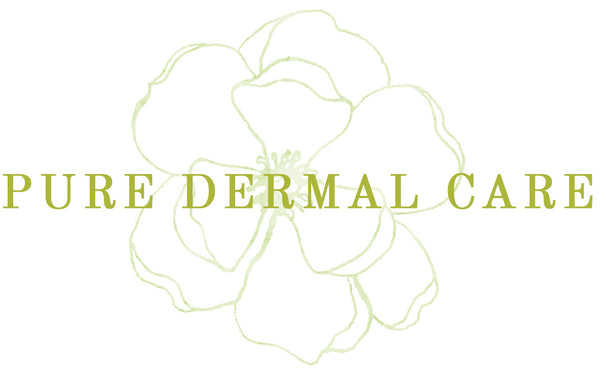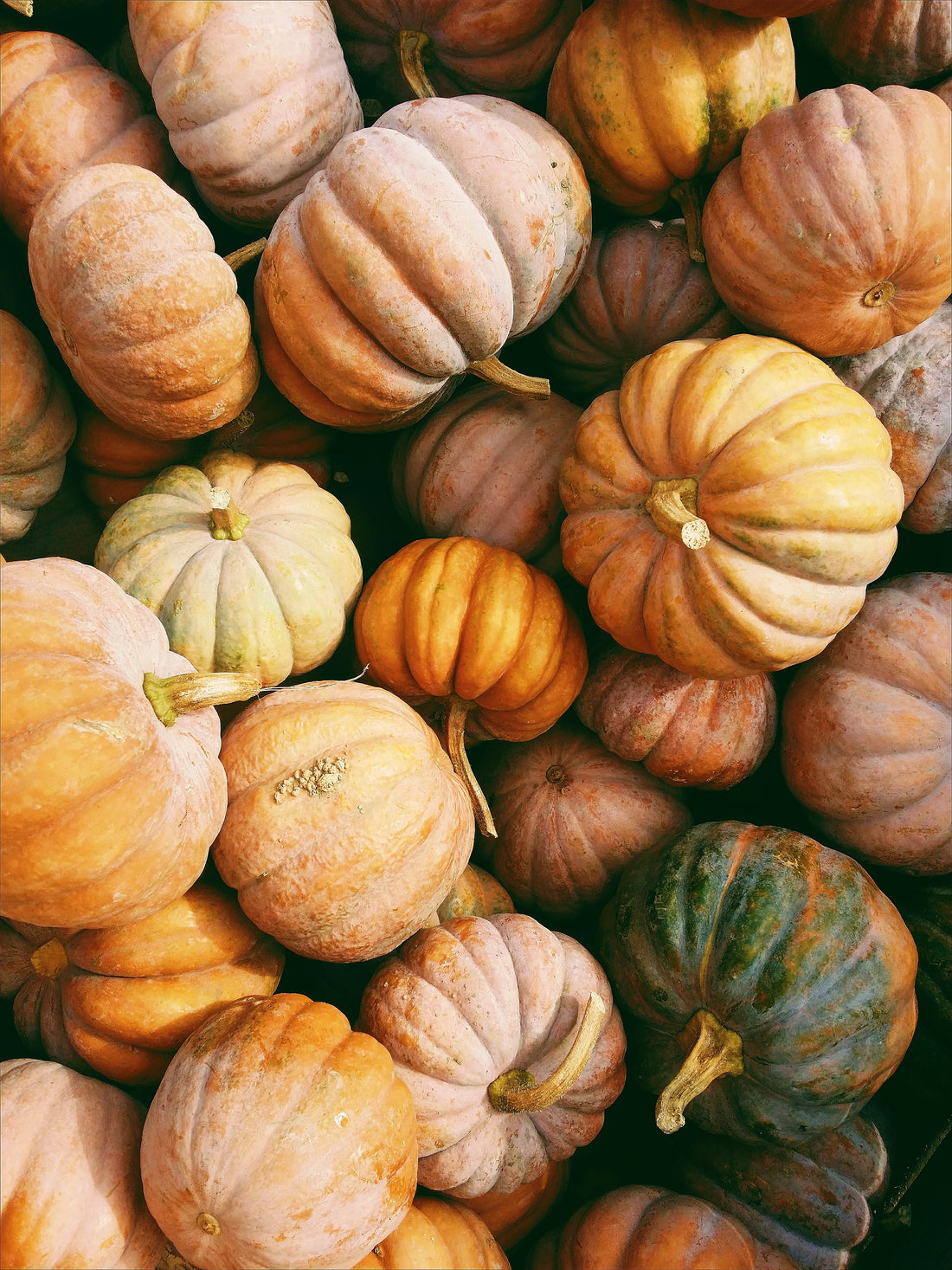You have heard of being red faced but how about pumpkin faced?
You won’t regret having a pumpkin infused facial. Take a look at one author’s list of 104 ingredients. Be prepared to be wowed!
-
Abscisic acid: A plant growth hormone that slows the cellular biological clock.
-
L-Adenine: With a nucleic acid base, it attracts vitamin B to help repair UV damage, and improve cellular respiration by increasing the cell’s ability to intake nutrients and eliminate waste.
-
D-Adenosine: An anti-inflammatory, it rebuilds subcutaneous fat in a smoother and more uniform structure.
-
Alanine: A protein-building amino acid that suppresses crystallization of glucose around protein fibrils.
-
Alpha-amino-adipic acid: A protein-building amino acid that greatly strengthens the Lysine (essential amino acid) subunits that make up collagen and elastin.
-
Aminobutyric acid (alpha, beta and gamma): A potent inhibitory amino acid also found in the brain, its potent antioxidant properties help inhibit the production of free radicals in the skin by preventing disconnection with the skin’s natural spin traps.
-
Arachidic acid: A moisturizing fatty acid also found in sunflowers.
-
Arginine: A semi-essential amino acid responsible for securing and concentrating nitrogen-based spin traps, inhibiting free-radical production. It works with Alanine to suppress crystallization of glucose in protein fibrils.
-
L-Ascorbic acid: A vitamin C, it delivers a potent dose of antioxidants to the skin, stimulating the production of collagen and elastin.
-
Aspartic acid: A protein-building amino acid responsible for DNA production, it supports tissue respiration.
-
Boron: An elemental plant growth factor, it also serves as a catalyst for the benefits abscisic acid delivers to the skin.
-
Caffeic acid: A cinnamic acid derivative that helps reduce the appearance of pigmentation.
-
Calcium: Provides hydrating benefits, and stimulates cellular proliferation and tissue repair.
-
Carboxy-phenylalanine: A moisturizing fatty acid form of the protein-building amino acid phenylalanine.
-
Beta-carotene (D): An antioxidant pro-vitamin that protects against UV damage, and serves as a precursor to vitamin A.
-
Chromium: A mineral that improves RNA structure and function, and helps prevent AGEs.
-
Citrulline: An amino acid that improves the communications between the skin and the liver.
-
Cobalt: An important bio element and co-enzyme component that supports the production of spin traps.
-
Copper: An important bio element involved in transporting radical-free oxygen from the blood to the skin.
-
Codecarboxylase: A vitamin B-type co-enzyme that removes carbon dioxide from sensitive tissue-respiratory mechanisms (preventing the age-related “smothering” effect).
-
Crypto-xanthin: An escort carotenoid that improves the activity of beta-carotene.
-
Cucurbic Acid: An amino acid with antibiotic effects, it is unique to the pumpkin family.
-
Cucurbita-xanthin: A pumpkin carotene, it has a higher antioxidant content than beta-carotene.
-
Cucurbitin: An amino acid found in curcurbita (pumpkin) seeds, it provides anti-cancer properties.
-
Cucurbitol: A fatty alcohol that improves moisture retention in the skin.
-
Cysteine: A protein-building amino acid containing natural sulfur, it improves the efficiency of oxidation-reduction reactions in the epidermis, and moderates melanin dispersal.
-
Dehydroascorbic acid: An oxidized form of ascorbic acid with the same vitamin C activity, it supports the uptake of vitamin C.
-
Edistine: A globular protein, it improves water circulation through cell walls in the skin.
-
Alpha-ethyllathosterol: An amino acid sterol that has a conditioning effect on skin.
-
Ethyl-alpha-cholestadien-beta-oil: A cholesterol derivative with a smoothing effect on subcutaneous fat.
-
Ferulic acid: A derivative of caffeic acid, it enhances the effects of caffeic acid.
-
Fibe: This ingredient has a cleansing and micro-filtration effect on the epidermis.
-
Flavoxanthin: A carotenoid pigment with potent beta-carotene properties.
-
Gibberellin: A plant growth hormone that promotes healthy epidermal cell differentiation.
-
Glutamic acid: A protein-building amino acid that promotes the synthesis of NaPCA (sodium PCA), which hydrates and prevents water loss.
-
Glutinol: A form of glutathione with potent free-radical neutralizing effects.
-
Glycine: The simplest of all protein-building amino acids, it provides nitrogen from the production of the body’s natural spin traps.
-
Glyoxalic acid: A glycine derivative, pro-allantoin compound, it is important for tissue respiration.
-
Guanosine: A guanine-based sugar essential to healthy cell metabolism.
-
Histidine: An essential protein-building amino acid that is the catalytic center of many enzymes, it improves the skin’s immune system.
-
Hydroxy-brenztrauben acid: Pumpkin’s version of pyruvic acid, it is helpful in metabolizing age-induced sugar-crystals, stimulating collagen production and cross-linking collagen and elastin fibrils.
-
Hydroxybutyric acid: A fatty acid that increases the solubility of the skin’s waste products, and improves the skin’s self-cleaning capabilities.
-
Delta-hydroxylysine: An essential amino acid derivative, important for the uptake of skin’s immune cells originating in the bone.
-
Iron: An essential bio element, it is a catalyst for the oxidation-reduction reactions responsible for communication between dermal and epidermal cells.
-
Iso-Leucine: An essential amino acid that improves the activities of hydroxy-brenztrauben acid and hydroxyl-butyric acid.
-
Iso-Rhamnetin-Rutinoside-Rhamnoside: Supports the skin’s immune system and capillary protection. It is also a powerful flavonoid antioxidant.
-
Kaempferol: A plant flavonoid, it offers protection from UV damage and is a powerful antioxidant.
-
Alpha-Keto-Beta-Methyl-Butyric acid: Related to amino butyric acid and hydroxybutyric acid, it delivers combined effects.
-
Alpha-Keto-Beta-Methyl-Valerianic acid: This anti-neoplastic fatty acid, is a valeric acid derivative, similar to valerian extract.
-
Lauric acid: An emollient fatty acid, it provides antibacterial and antibiotic benefits.
-
Lecithin: A phospholipid (phosphatidylcholine), it is a basic constituent of biomembranes for lipid integrity.
-
Leucine: (see 45 and 28) This ingredient improves utilization of edestine, and is essential to the citric acid (Krebs) cycle for cellular energy production with low free-radical evolution.
-
Linoleic acid: An essential fatty acid helpful in the implementation of phospholipids.
-
Alpha-linolenic acid: An essential fatty acid that improves utilization of glycerophospholipids like lecithin.
-
Lupeol: A sterol with surfactant properties that aid in the cleansing of skin.
-
Lutein: A xanthophyll, it is a naturally occurring carotenoid offering powerful protection and antioxidant properties.
-
Lysine: An essential protein-building amino acid and growth promoter.
-
Magnesium: A bio-element that encourages the proliferation of keratinocytes.
-
Manganese: A bio-element that improves the integrity of cytoskeleton (the epidermal cell’s tubular scaffolding).
-
Mannitol: A derivative of mannose sugar, the energy unit driving the mannoprotein’s use by the skin’s immune system.
-
Methionine: An essential protein-building amino acid containing sulfur derived from cysteine (see 26). It improves co-enzyme presence in utilizing activated or “methylated” collagen and elastin.
-
Myristic acid: An emollient fatty acid.
-
Neoxanthin: A xanthophyll (see 56) and carotene with antioxidant effects.
-
Niacin: A vitamin B3 (also see 3, 20 and 61), it is vital for energy release in the tissue, and plays an essential role in the growth and maintenance of healthy skin.
-
Oleic acid: The most widely distributed unsaturated fatty acid, it is a component of phospholipids and makes the skin more receptive to the benefits of other fatty acids.
-
Ornithine: A catalyst in the Urea Cycle, this amino acid helps convert waste nitrogen into non-toxic, soluble urea. Topically, it tightens the communication links between the skin and liver.
-
Oxalic acid: A carboxylic acid produced in the body by ascorbic acid metabolism. Applied topically, it helps condition the skin to be more receptive to alpha-hydroxy acid treatments.
-
Oxycerotinic acid: A saturated fatty acid that supports healthy pigmentation.
-
Palmitic acid: A fatty acid that supports skin barrier.
-
Palmitoleic acid: An unsaturated fatty acid that enhances epidermal nutrient effects of topical phospholipids, along with palmitic acid.
-
Phenylalanine: An essential protein-building amino acid and precursor to melanin, it improves the skin’s melanization response time.
-
Phospholipids: With relatively high amounts of linoleic acid, it plays an important role in ceramide synthesis.
-
Phosphorus: A bio-element that improves photosynthetic conversion of provitamin D in the skin. It suppresses the number of errors in transcription of particular genes in the skin, thereby promoting healthier skin-renewal.
-
Phytic acid: Known as “myoinositol,” this is a phosphoric acid compound that sharpens the skin’s cellular response to external stimuli such as hormones. It utilizes pumpkin wine’s calcium and magnesium content to achieve this.
-
Phytosterols: Promote healthy enzyme levels in the epidermis, and are responsible for lipid replenishment and barrier repair in the stratum corneum.
-
Potassium: A bio element, this plays an important role in the genesis and correction of imbalances of acid-base metabolism that result from chemical peels.
-
Proline: A protein-building amino acid essential to collagen production.
-
Protein: A unique sequence of amino acids characteristic of the pumpkin family (including squash and gourds), these combine well with the skin’s natural proteins.
-
Quercetin: (see 46) A plant pigment that protects the dermal capillary bed and reduces the incidence of visible facial capillaries. It is also a potent flavone antioxidant.
-
Rhamnazin rutinoside: see 46
-
Riboflavin: Part of the B vitamin group, it is necessary to the proper development and function of the skin.
-
Salicylic acid: A beta-hydroxy acid and natural spin trap, pumpkin has the highest natural concentration of salicylic acid of any plant.
-
Selenium: A powerful physiological antioxidant comparable to glutathione in potency. Pumpkin-based selenium is particularly powerful, as it is blended with natural carotenoids.
-
Serine: The precursor to several amino acids such as glycine and cysteine.
-
Silicon: An essential trace element in human nutrition, this mineral is responsible for the linking of mucopolysaccharides to protein in the skin (and throughout the body), concentrating them where they are most needed.
-
Beta-sitosterol: (see 75) This is the most potent of the phytosterols (plant steroids), and much safer than animal steroids.
-
Sodium: (see 76) It delivers hydration to the skin and has a plumping effect.
-
Alpha-spinasterol: A spinach-type steroid that strengthens the desmosome fibers connecting skin cells and provides an overall firming effect.
-
Stearic acid: A fatty acid commonly used in skin care as a moisturizing vehicle.
-
Alpha-Stigmastadien-Beta-oil: (similar to 88) This targets the granular layer of the epidermis, making the membrane coat more pliable.
-
Stigmasterol: (similar 90) It imparts horizontal integrity to the filaments of the epidermal spinous layer.
-
Stigmastenyl-glucoside: A “sweet” steroid from the plant steroid group, it has a lubricating effect on the keratohyalin, the protein matrix that supplies the scaffolding for epidermal keratin fibers.
-
Sucrose: It suppresses the crystallization of glucose around collagen and elastin fibrils.
-
Thiamin: (see 41) Vitamin B1, it maintains the stability of pyruvic acid compounds in supplying ATP (cellular) energy.
-
Threonine: An essential protein-building amino acid that suppresses age-related cross-linking of collagen and elastin fibers.
-
Alpha-Tocopherol: A vitamin E, it prevents the spontaneous oxidation of the skin’s lipid layer.
-
Trigonelline: A metabolite of vitamin B2 complex, it has similar effects of riboflavin in that it supports the preservation of the skin around eyes, lips and nose.
-
Tryptophan: An essential amino acid, and vitamin B-precursor that suppresses hyperpigmentation along with associated hyperkeratosis and scaling.
-
Tyrosine: A protein-building amino acid, and precursor of melanin, it improves communication between the skin and thyroid gland, which is essential in mediating any vitamin A effects in the skin (carotenoids to retinoids).
-
Valine: An essential protein-building amino acid, it boosts antibacterial pathways of skin.
-
Viola-xanthin: An extremely important plant carotenoid and powerful antioxidant.
-
Xanthophyll: The most stable of plant pigment carotenoids, it is a potent antioxidant and works to protect the skin from environmental damage.
-
Zeaxanthin: A carotene-based plant pigment, it is an extremely potent antioxidant (part of the xanthophyll group).
-
Zinc: An essential bio element and trace element mineral, it protects from cutaneous erosion, and soothes, heals and provides antimicrobial and antifungal properties.
List created by Shannon Esau who has owned skin care salons in the Dallas/Ft. Worth area, has studied chemistry in skin care formulations and has been mentored by Rhonda Allison for decades.

